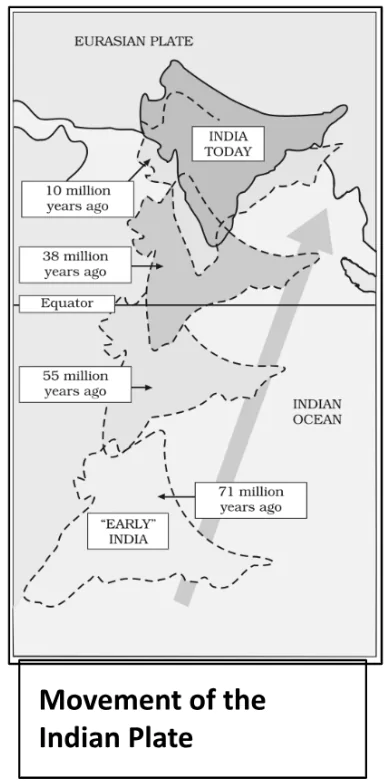![]() April 27, 2024
April 27, 2024
![]() 11484
11484
![]() 0
0
The Indian Plate, originally part of the supercontinent Gondwana, embarked on a northward trajectory around 200 million years ago, eventually converging with the Eurasian Plate approximately 40-50 million years ago. As delineated by plate tectonic theory, this collision triggered the monumental uplift of the Himalayas, evidenced by frequent seismic activity. Concurrently, the eruption of lava forming the Deccan Traps underscores the dynamic geological processes shaping the Indian subcontinent within the framework of plate tectonics.

| Must Read | |
| Current Affairs | Editorial Analysis |
| Upsc Notes | Upsc Blogs |
| NCERT Notes | Free Main Answer Writing |
The journey of the Indian Plate, from separating from Gondwana to colliding with Asia, illustrates Earth’s dynamic geological processes. Seismic activity and formations like the Himalayas and Deccan Traps underscore plate tectonics’ pivotal role in shaping India’s landscape. The ongoing collision with the Eurasian Plate highlights Earth’s ever-changing surface. Studying plate movements provides valuable insights into our planet’s geological history and evolutionary forces.
<div class="new-fform">
</div>

Latest Comments